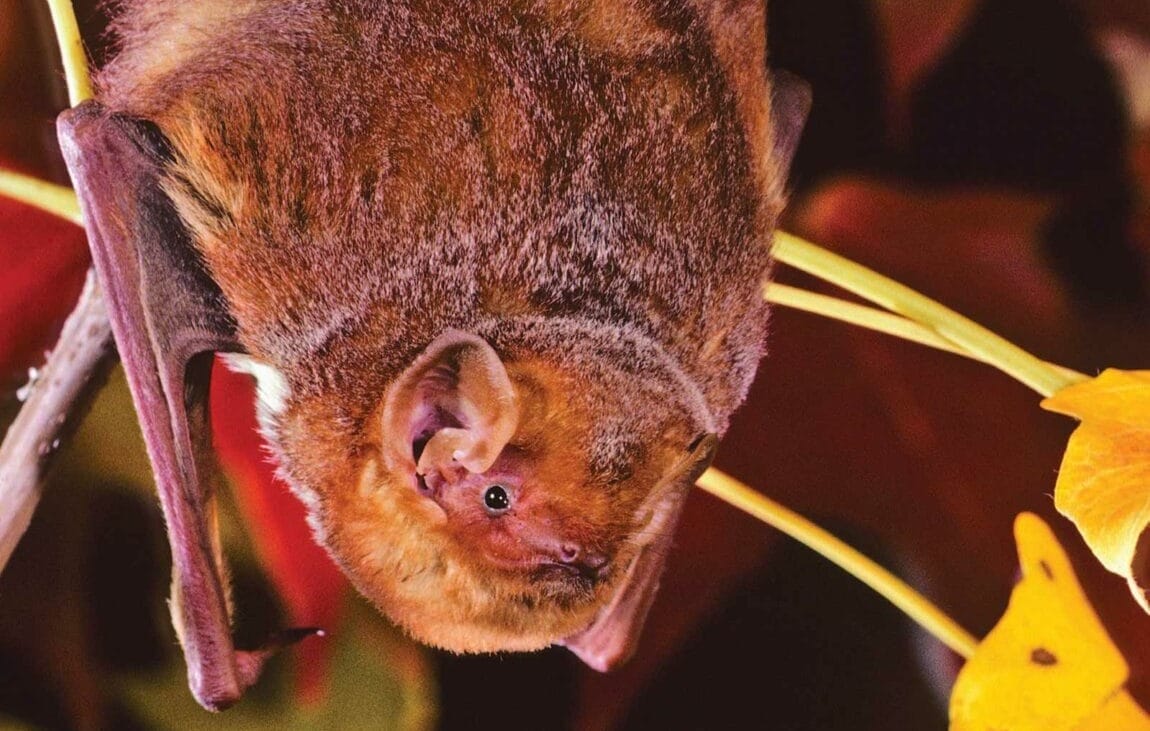Protection efforts aided by bat diversity
These adorable “cats of the sky” get bad press according to Floyd’s Eric Wolf, Biotic Systems Assessor for the Virginia Department of Transportation. Wolf has spent his entire adult life dedicated to the love and protection of wildlife.

Thousands of winged black creatures flying across a barely lit sky, silhouetted by a setting sun. It sounds like the opening scene of a Halloween horror film, but this happens every night in many places around the world. Bats swarm from the buildings, treetops, and from beneath bridges to take to the sky. They spend the night using echolocation to find and eat bugs, like mosquitos.
These adorable “cats of the sky” get bad press according to Floyd’s Eric Wolf, Biotic Systems Assessor for the Virginia Department of Transportation. Wolf graduated with a Bachelor of Science Forestry and Wildlife Resources from Virginia Tech, and a Master of Wildlife Science from Texas Tech, and he has spent his entire adult life dedicated to the love and protection of wildlife.
Mark J. Harris
Floyd County Farm Bureau
(540) 745-2021
335 E. Oxford St.
Floyd VA 24091
Wolf said, “I’m serving VDOT as an endangered species biologist, and the purpose there is to try to avoid impacting already vulnerable species with infrastructure improvement projects that everyone needs — bridges, drainage systems, that sort of thing… There are lots of reasons why animals become endangered, but one of them is conflicting with human needs, and that tends to put the species’ needs secondary.”
All projects that use federal funding or have a federal permit must comply with the Endangered Species Act, Clean Water Act, Migratory Bird Treaty, etc., so Wolf’s role as the Endangered Species Biologist is to minimize the potential for transportation projects to negatively impact any protected species.
Wolf said that “bats are an amazingly diverse group” with amazing characteristics (not limited to the fact that they are the only true mammal with powered flight), which is why, in-part, he felt led to study the nocturnal creatures.
“They can do things that no other animals can do,” Wolf said. “They’ve diversified into every niche imaginable. They have a variety of food sources, and they live on every continent but Antarctica.”
He noted that they have likely been around since the time of dinosaurs and goes on to say that “bat bones don’t fossilize as well, but the oldest bat skeletons we can find look very nearly identical to the bats that we see today. This is from back in the Eocene, about 50 million years ago. When horses were the size of dogs and had three toes, and human ancestors were climbing around in trees, bats were pretty much fully evolved, as far as we can tell.”
Though most small mammals only live a short amount of time, bats can live for 25 or 30 years. Some types of bats are only found in specific parts of the world, and nowhere else, which means, despite their long lifespan, if they lose that habitat, they are gone forever.
People like Wolf and others around the country in similar positions, help make this scenario less likely. With protections in place, local municipalities have to plan around bat colonies, such as the large transportation project currently on hold in West Virginia due to an endangered species of bat.
Family-owned HVAC installation and services.
25 years of experience. Committed to excellence.
Financing available with approved credit.
540-745-4912
436 Floyd HWY S
Bats all over the world call many man-made structures their home, and Wolf’s job is to facilitate their safety in regard to government infrastructure projects. According to Wolf, bats often choose certain structures because they are trying to recreate what they would find in the natural environment.
For instance, bats like to make cement bridges their homes often because it “is kind of similar to what they’re looking for in caves…a big concrete structure with lots of little nooks and crannies. The concrete tends to change temperature very slowly, so there’s a thermal stability there that they’re after. Often the bridge is also over water, and bats like to eat insects, and that’s where the insects tend to be as well, so it’s kind of a perfect combination.”
Wolf also pointed out that bats do not damage the bridge structure. The issue with the bats living in the space is when the bridge needs to be repaired. Because bats are protected during active season, sometimes, it can delay the repairs that need to happen.
“This takes planning ahead of time so that the repairs can be completed during the winter months, when the young kits are able to fly,” said Wolf.
While bats roosting under cement bridges aren’t a problem, when it comes to bats taking up residence in your attic, the best choice is prevention. Wolf said “the best way to keep bats out of your living space is to have a tight envelope in your house, keeping little holes closed off. They like to go in through the ventilation eaves of attics. They’re very small creatures, and they can fit through a little, tiny hole about the size of a quarter, depending on the species.”
If you find it’s too late for prevention, Wolf noted that “it’s actually illegal to exclude some species of bats from their roosts during certain times of the year, and that’s to protect them during the kit season, because they’re very vulnerable.”
Your trusted Floyd County real estate experts. Visit our downtown Floyd office adjacent to the stoplight or browse our current listings online. Representing both residential and commercial buyers and sellers with integrity and always working to get YOU the best deal!
That being said, he said that he spends “most of my days advocating for bats to be able to move through their environment… but generally speaking, anybody living in my house, I want to be there by invitation.” He explained that after kitting season is over, a non-harmful way of getting the bats to leave your house is an excluder, which works by creating a one-way door. The bats can leave, but cannot get back in.
If you do find a bat in your home, do not pick it up with bare hands. These small creatures can and will bite. Because they are mammals, bats can also carry rabies, as all mammals can, so Wolf suggests contacting a professional or using leather gloves or a folded towel to pick up the bat and then bringing it safely outside. Placing the bat on the side of a tree is a safe location where it is able to climb.
Unfortunately, as a result of their affiliation with rodents (which is unfounded), rabies, and Halloween horror, people often have a fear of bats. Wolf said that “this negative association with bats isn’t really the same worldwide. There are Chinese cultures where the bat is also the character that means luck.” Bats are also beloved because they eat so many bugs and mosquitos, and their guano is useful for tree fertilizer.
Whether or not you want bats taking up residence nearby or are still a bit squeamish of our flying friends, we can all agree that bats are a beneficial and amazing part of our ecosystem, and people like Wolf intend to keep it that way.
Tanja Vidovic is a Floyd Resident and writer for WMNF.
*This article has been updated from a previous version to correctly state the time period of the Eocene Epoch (which occurred about 50 million years ago), roosting terminology, and to refer to baby bats as pups.



